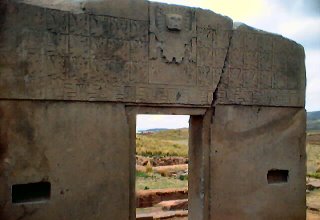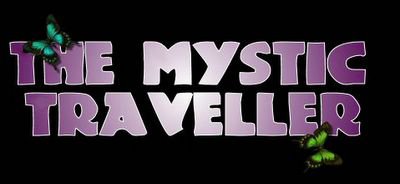Lake Titicaca - The Beginning Of The Universe
Lake Titicaca, which stretches along part of the Peruvian-Bolivian border, radiates all the mystical heritage that has been imbued upon it. Perhaps this began, because it is the world's highest navigable lake at 3,812m above sea level. It is a place where, at times, the clouds literally touch the water.
The Tiawanakans, who built one of the earliest sophisticated civilisations on the Andean Altiplano, believed that it was at Lake Titicaca, where their chief god, Viracocha, descended upon Earth to create all life.
Virococha is a fascinating deity, as he is described as being fair-skinned, bearded, white-robed and wearing saddles; indeed, he sounds extremely Christ-like, although I am sure there are other reasons for this similarity, just as dragons resemble dinosaurs!
For the pre-Columbians, Viracocha was the catalyst for civilisation throughout the world, as they knew it. He is also attributed with introducing different languages to the races he is accredited with creating.
 Left: Viracocha depicted on the Gateway Of The Sun, Tiawanako, Bolivia.
Left: Viracocha depicted on the Gateway Of The Sun, Tiawanako, Bolivia.
Photography by El-Branden Brazil
The Inca, who also had their own variation on the Viracocha myth, believed that their civilisation was brought into being at Lake Titicaca, when a married couple, Manco Capak and Mama Ocllo, were blessed by the sun god, Inti, to bring culture to the savage communities that surrounded the lake. Legend says that after they brought cultivation to the land, they set about teaching the people how to live and worship the sun god, and thus the great Inca civilisation was born.
It was the largest empire in the Pre-Columbian Americas, stretching from Peru, Bolivia, Ecuador, Argentina and Chile, and lasting from 1250 to 1548.
Their civilisation came to a sudden end, with the arrival of the Spanish Conquistadors, led by Francisco Pizarro. With only 180 men, one cannon, 27 horses and a lot of devious politicking, Pizarro was able to conquer the Inca empire and reap its treasures.
To this day, on Isla Del Sol (Island of the Sun), the visitor can find many remaining buildings from the time of the Incas. Still standing, is a sacrificial stone table, upon which the sun god was appeased with the blood of many victims.
Virococha is a fascinating deity, as he is described as being fair-skinned, bearded, white-robed and wearing saddles; indeed, he sounds extremely Christ-like, although I am sure there are other reasons for this similarity, just as dragons resemble dinosaurs!
For the pre-Columbians, Viracocha was the catalyst for civilisation throughout the world, as they knew it. He is also attributed with introducing different languages to the races he is accredited with creating.
 Left: Viracocha depicted on the Gateway Of The Sun, Tiawanako, Bolivia.
Left: Viracocha depicted on the Gateway Of The Sun, Tiawanako, Bolivia.Photography by El-Branden Brazil
The Inca, who also had their own variation on the Viracocha myth, believed that their civilisation was brought into being at Lake Titicaca, when a married couple, Manco Capak and Mama Ocllo, were blessed by the sun god, Inti, to bring culture to the savage communities that surrounded the lake. Legend says that after they brought cultivation to the land, they set about teaching the people how to live and worship the sun god, and thus the great Inca civilisation was born.
It was the largest empire in the Pre-Columbian Americas, stretching from Peru, Bolivia, Ecuador, Argentina and Chile, and lasting from 1250 to 1548.
Their civilisation came to a sudden end, with the arrival of the Spanish Conquistadors, led by Francisco Pizarro. With only 180 men, one cannon, 27 horses and a lot of devious politicking, Pizarro was able to conquer the Inca empire and reap its treasures.
To this day, on Isla Del Sol (Island of the Sun), the visitor can find many remaining buildings from the time of the Incas. Still standing, is a sacrificial stone table, upon which the sun god was appeased with the blood of many victims.




6 comments:
wearing saddles? hmm, typo? LOL!?
Very interesting stuff. Thanks :)
Typos even happen for the Mystic Traveller from time to time! :)
The lake beautiful.
Many a British man appease the sun god these days, with their burns from not wearing sunscreen on the beach after long and cold cloudy winters.
That is so true, Alexander. LOL. It should be made a criminal offense to display a lobster red beer belly on any beach from here.....to.....hmmm.....Mongolia!
"Viracocha stepped forth onto the Altiplano with a sun burned nose and boomed - "All who follow me, will have work tommorow morning. I have many things I wish to build". Viracocha's red nose was seen by the natives as one posessing great knowledge. Because it glowed red like the sun. Viracocha knew different of course" - 25:17
(History of the Ancient Andeans,by Alexander)
Post a Comment